Related Research Articles
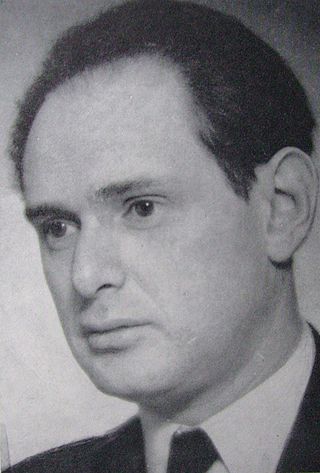
Gunnar Edvard Heckscher was a prominent Swedish political scientist, academic, and conservative politician. He earned his Doctor of Philosophy in 1934 and soon became a docent in political science at Uppsala University. Throughout the 1930s and 1940s, he lectured in political science at both Uppsala University and Stockholm University College. He later held significant roles at the Stockholm School of Social Work, where he became rector in 1945 and professor of political science by 1948. In 1961, Heckscher became chairman of the National Organization of the Swedish Conservative Party, serving until 1965, and was a member of Sweden's Lower House of the Riksdag, representing the Right Party, where he advocated for Sweden's membership in the European Community.
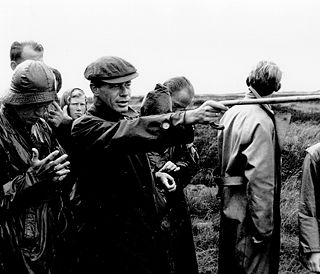
Tyge Wittrock Böcher was a Danish botanist, evolutionary biologist, plant ecologist and phytogeographer.

Botaniska Notiser was a Swedish scientific periodical concerning botany, issued in Lund, by Societate botanica Lundensi or [Lunds Botaniska Förening]. It was published from 1839 to 1980, when it fused with Botanisk Tidsskrift, Friesia and Norwegian Journal of Botany to form the Nordic Journal of Botany. In 2001, the journal reappeared as a regional journal for botany in south Sweden.

Åke Joel Ohlmarks was a Swedish author, translator and scholar of philology, linguistics and religious studies. He worked as a lecturer at the University of Greifswald from 1941 to 1945, where he founded the institute for religious studies together with the Deutsche Christen member Wilhelm Koepp. His most notable contribution to the field is his 1939 study of Shamanism. As a translator, he is notable for his Swedish version of the Icelandic Edda, of Shakespeare's works and a heavily criticised translation of J. R. R. Tolkien's The Lord of the Rings, as well as a version of the Qur'an and works by writers including Dante and Nostradamus.
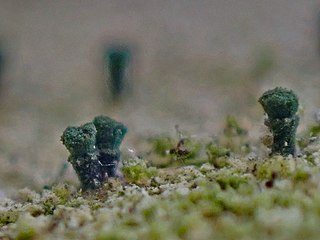
Microcalicium is a genus of lichen-forming fungi in the order Pertusariales. It is the only genus in the monotypic family Microcaliciaceae. These taxa were circumscribed by the Finnish lichenologist Edvard August Vainio in 1927, with Microcalicium disseminatum assigned as the type species.

Den nya nordiska floran is a book of Swedish flora from 2003 by Bo Mossberg and Lennart Stenberg, with illustrations by Bo Mossberg. It contains descriptions, illustrations and distribution maps of all plants in Sweden, Denmark, Norway, Finland, Faroe Islands and Iceland, a total of more than 3,250 species. It is a sequel to the earlier book Den nordiska floran. It has been called indispensable as a reference book, but criticized for being too heavy to be a field flora. It was translated into Danish by Jon Feilberg, titled Den Nye Nordiske Flora. The book is fact-checked by Thomas Karlsson. It was also translated into Norwegian by Steinar Moen, with fact-checking by Svein Båtvik. The title of this version is Gyldendals store nordiske flora. Revidert og utvidet utgave.

Lecanora impudens is a species of crustose lichen in the family Lecanoraceae. It was described as new to science by Gunnar Degelius in 1944.

Esaias Tegnér Jr. was a Swedish linguist. He was professor of eastern languages at Lund University 1879-1908, lead editor of Svenska Akademiens ordbok 1913-1919, member of the Bible Commission 1884-1917, and member of the Swedish Academy from 1882 onward. Tegnér was the grandson of the well-known poet Esaias Tegnér, also his namesake, and was brother-in-law to the poet and composer Alice Tegnér.
Adolf Hugo Magnusson was a Swedish naturalist who specialized in lichenology. He was a school teacher in Gothenburg from 1909 to 1948, but spent his spare time on the study of lichens. Magnusson published many monographs and floristic papers, specializing in crustose lichens. He formally described about 900 new taxa, specializing in the genera Lecidea, Lecanora, Caloplaca, and Acarospora.
Jan Eric Ingvar Kärnefelt is a Swedish lichenologist.

Fredrik Emil Volmar Elfving was a Swedish-speaking Finnish botanist, plant physiologist, and university administrator. During his university training, he frequently traveled abroad to learn new scientific methods and techniques from other prominent European scientists. Although his earliest publications dealt with phytogeography and phycology, his most notable research was in plant physiology. Early in his career, he published seminal work on the flow of water through the stems of woody plants, and investigated the phenomenon of transversely geotropic plant organs. In contrast to his works on plant physiology, his later experiments and views on lichens, which he himself considered his most important work, was far less favourably received.
Rolf Santesson (1916–2013) was a Swedish lichenologist and university lecturer. He was awarded the Acharius Medal in 1992 for his lifetime contributions to lichenology.
Per Magnus Jørgensen is a Norwegian botanist and lichenologist, and Professor Emeritus of systematic botany at the University of Bergen. He is known for his work on the lichen families Pannariaceae and Collemataceae. Jørgensen was awarded the Acharius Medal in 2021 for his lifetime contributions to lichenology.
Candelariella vainioana is a species of crustose lichen in the family Candelariaceae. It was described by Finnish lichenologist Rainar Hakulinen in 1954 from collections made by Edvard August Vainio in Hollola in 1874. The specific epithet vainioana honours Vainio. The lichen has been reported from Finland, Sweden, and Norway. The lichen's common name in Swedish is kopparägglav, and kuparikeltuaisjäkälä in Finnish, both of which mean "copper egg-yolk". As of 2019, it is considered to be an endangered species in Finland due to its small population.
Leif Tibell is a Swedish lichenologist and Emeritus Professor at the University of Uppsala. He is known for his expertise on calicioid lichens. He was awarded the Acharius Medal in 2012 for lifetime achievements in lichenology.
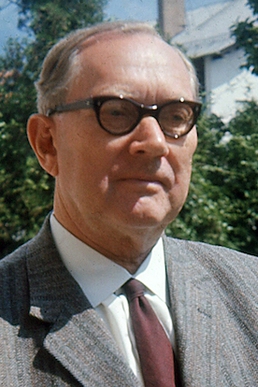
Gunnar Bror Fritiof Degelius was a Swedish lichenologist. Between the publications of his first and final scientific papers, Degelius had a 70-year-long research career. While he was best known for his expertise on the lichen genus Collema, he also wrote important papers on lichen biology and ecology, floristic studies of the Nordic countries and various other areas around the world, and lichen succession. Degelius described 124 new taxa, and published about 130 scientific papers. In 1992 he was one of the first to be awarded the Acharius Medal for his lifetime contributions to lichenology. Fifteen species and three genera have been named in honour of Degelius.
Lichinodium ahlneri is a species of filamentous lichen belonging to the family Lichinodiaceae. Described as a new species in 1963 by Aino Henssen, the specific epithet honours Swedish lichenologist Sten Ahlner.
Gustaf Einar Du Rietz was a Swedish botanist and lichenologist. His research interests included plant ecology, lichen taxonomy, and biogeography. He was a leading figure in the Uppsala school of phytosociology–the study of groups of species of plants that are usually found together–and is recognised for his role in advancing this field of science and for mentoring future lichenologists. He led the Swedish Australasian Botanical Expedition of 1926–27, a seven-month research tour of various locations. He was married to Greta Sernander, who was also a lichenologist. During the expedition, Du Rietz and his wife researched the vegetation in New Zealand, Australia, and Java, focusing on mountain lichens and their potential as bioindicators for environmental conditions. They collected around 3000 specimens, contributing significantly to the study of bipolar lichens and forest ecology, despite challenges in processing all the samples upon return to Sweden. Several species have been named in his honour. In 1949, Du Rietz was elected to the Royal Swedish Academy of Sciences and contributed significantly to nature conservation efforts in Sweden.
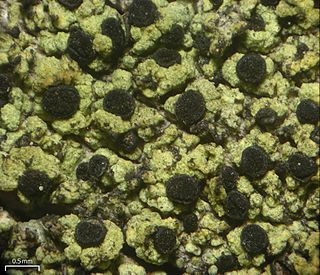
Calicium pinicola is a species of lignicolous (wood-dwelling), crustose lichen in the family Caliciaceae. It is widely distributed in Europe, and also occurs in the United States.

Ove Almborn was a Swedish lichenologist and educator. Born in Ronneby, Sweden, Almborn grew up in an environment that nurtured his early interest in botany and lichens. His early academic interests and discoveries in new lichens inspired his doctoral dissertation, which focused on the distribution and ecology of lichens in South Scandinavia. After graduating from Lund University, he was employed at its department of systematic botany, initially as a senior lecturer and later as the curator of the botanical collections at its botanical garden.
References
- ↑ "Ahlner, Sten Gustav Edvard (1905–)". International Plant Names Index . Retrieved 24 July 2021.
- 1 2 3 Degelius, Gunnar (1993). "Sten Ahlner (1905–1991): in memoriam". Graphis Scripta. 5 (2): 117–120.
- ↑ Henssen, A. (1963). "Eine Revision der Flechtenfamilien Lichinaceae und Ephebaceae". Symbolae Botanicae Upsalienses. 18 (1): 84.
- ↑ Tibell, L. (1978). "The genus Microcalicium". Botaniska Notiser. 131: 229–246.
- ↑ Jørgensen, P.M. (1978). "The lichen family Pannariaceae in Europe". Opera Botanica. 45: 15.